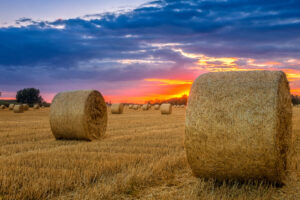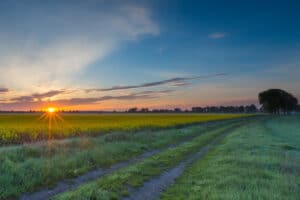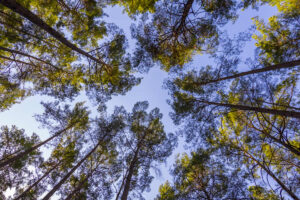My knowledge of wine is limited to the fact that there are reds and whites, and that you need to invest in a cooler to store these wines.
In a wild year, I might drink three, maybe, four glasses; mainly for healthy-heart reasons.
I wouldn’t know an earthy tone from dirt.
But I had an idea about a month ago. I live in a mountain county about an hour’s drive west of the Intersection of I-81 and I-64 at Staunton, Virginia in the Shenandoah Valley. We’re two hours due west of Charlottesville. My county has 2500 full-time residents and no winery. We’re looking for agriculture-based businesses.
I know of a farm that might work as a winery. The soils are limestone and shale. About 60 acres are slightly sloped and another 40 would be trellis-capable. Another 140 acres is pasture. It’s been used as a cattle/sheep/hay farm for 200 years. The 60 acres is probably Murrill soil, well-drained and about four- to five-feet deep. Stoney, but tillable. pH estimated at 5.5 to 5.6.
The land is located at about 2,700 feet elevation in a mountain valley. A wine consultant has told me that 1800 is a good elevation, so 2700 may be too high, except for some cold-hardy, specialty grapes. (I’ve now said far more than I know.) The land runs N to S between 4,000-foot-high ridges, though the ridges are not immediately adjacent.
This is very scenic country.
On occasion, we will be short of rain in August, but September usually starts with a heavy one that muddies up the County Fair.
The growing season is roughly from April 15-May 1 (last frost) to October 1st (first frost), but this can vary on each end in atypical seasons. We generally have a couple of winter days at zero F, but mostly we’re in the 20s and low 30s. Summer now finds a couple of days in the 90s, but mostly in the 70s and low 80s. Like everywhere else, we are getting warmer, which is why I started thinking about crops that might now be suitable for our changing particulars. When we moved to Blue Grass in Highland County 25 years ago, we got out a fan for a week or two in the summer. Now we have air conditioners.
Surface water consists of an intermittent creek, which floods one unimproved, uninhabitated floodplain–about three or four acres at the low corner of the property. Used as pasture. Limestone underlies everything. Drilled wells supply the houses. Whether emergency irrigation would be advisable is a wine consultant question. Springs are generally reliable in the area. I have, however, seen several dry up in a prolonged drought of about ten years ago. The limestone is karst, so there will be water flow underground.
Farmland surrounds. No pollution other than manure from grazing.
55 of the 60 acres has been used for hayfield with no chemicals. A separate 5-acre plot was used for corn, with chemical application. 95% of the farm would qualify as certified organic, based on what I know. The livestock have been treated with routine vaccines and wormer.
And here is my data base, as empirical as it comes. About 20 years ago, I planted three or four Concord vines…and they have produced a huge amount of grapes every year without me doing anything. As a matter of full disclosure, I should add that I am incapable of growing anything, beyond maybe lettuce on my best gardening day. I don’t spray and I don’t pray–and they still grow. Japanese beetles will chew their leaves into lace, and it doesn’t bother them–or least not that I notice. Whether this empirical evidence has any application to wine varietals is not for me to say.
Virginia has a wine industry. It’s centered in the Shenandoah Valley, around Charlottesville and Richmond. We are west of the farthest industry boundary, colder and higher. Virginia Tech has put out information on wineries in Virginia–all of which applies to there, not here.
Highland County has been known as the southern-most county where maple sugar trees are tapped for the commercial production of maple syrup. We have a March Sugar festival that draws about 50,000 visitors over two weekends. That says something about what our climate has been–much more like NY Finger Lakes than Virginia. We’re about an hour’s drive from The Homestead and a little more to the Greenbrier in West Virginia.
The farm has two barns in good repair, neither of which is modern. Silos are unloaded by hand for winter cattle feeding. There’s a tenant’s/farm manager’s house behind the main place–in good repair and modernized.
The main house is a large, three story, 10-room brick ante-bellum brick affair that’s been modernized. It could serve as a home or a tasting facility. The winery operation would have to be built from scratch.
I am prone to trying new things. I’m also prone to trying new things that I know nothing about. I’ve learned this about myself over the years. It’s been an expensive lesson.
Setting up 100 acres of grapes and a winery to match is a hideously expensive operation. Rolling the dice on an unknown area is more risky than going where everyone else is. A buyer would have to know what he or she is doing, preferably having comparable experience with an area like this.
I’ve made contact with a couple of Virginia wine consultants who would help on a fee basis.
I’m willing to be a local partner, helping to get things started right.
The County is ag-friendly. This would be a good thing for the local economy–an alternative to cattle, sheep and poultry. A marketing network for Virginia wines is in place.
The asking price for 246 acres by survey is $2.5 million as a FSBO. This is less than half what a comparable place in Virginia’s wine-growing country would fetch.
The right buyer would need to come in with cash, rather than try to borrow everything. Setting up the vineyard is maybe $10,000/A. Probably three or four years before production quantity comes in. The winery infrastructure would be on top of the purchase price and the vineyard cost. Assuming the wine is good, my guess is that an operation starts making money ten or 12 years out.
Let me know if this idea is of interest.
This content may not be used or reproduced in any manner whatsoever, in part or in whole, without written permission of LANDTHINK. Use of this content without permission is a violation of federal copyright law. The articles, posts, comments, opinions and information provided by LANDTHINK are for informational and research purposes only and DOES NOT substitute or coincide with the advice of an attorney, accountant, real estate broker or any other licensed real estate professional. LANDTHINK strongly advises visitors and readers to seek their own professional guidance and advice related to buying, investing in or selling real estate.









Add Comment